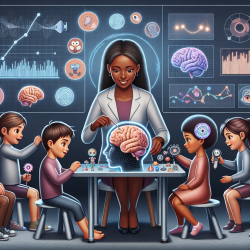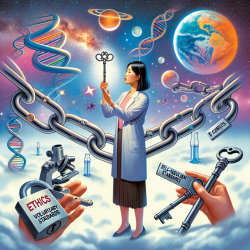Introduction
As a Special Education Director in a school district, ensuring that students receive the best possible care is a top priority. One of the most significant challenges we face is the shortage of therapists and health professionals, which directly impacts the quality of education and support services provided to students. The recent research article titled "Association between inequalities in human resources for health and all cause and cause specific mortality in 172 countries and territories, 1990-2019: observational study" offers insights that can be leveraged to improve our practices.
Key Findings from the Research
The study highlights the global inequalities in human resources for health (HRH) and their association with mortality rates. It reveals that countries with higher HRH densities tend to have lower mortality rates, indicating the critical role of adequate health workforce distribution. The research underscores the importance of equitable HRH distribution to achieve universal health coverage by 2030.
Implications for Online Therapy Services
For a company like TinyEYE, which provides online therapy services to schools, these findings are particularly relevant. Here are some ways to implement the research outcomes:
- Focus on Equitable Distribution: Ensure that online therapy services are accessible to underserved areas. By leveraging technology, TinyEYE can bridge the gap in HRH distribution, providing essential therapy services to students in remote or underserved regions.
- Enhance Therapist Training: Investing in continuous professional development for therapists can improve service quality. This aligns with the study's emphasis on the need for a skilled and motivated health workforce.
- Advocate for Policy Changes: Engage with policymakers to highlight the importance of HRH equity. Advocacy can lead to increased funding and support for online therapy services, ensuring that all students have access to the care they need.
Encouraging Further Research
The study provides a foundation for further research into the specific needs of different regions and how online therapy services can be tailored to meet these needs. Practitioners are encouraged to explore the following areas:
- Regional HRH Needs: Conduct studies to understand the specific HRH needs of different regions and how online therapy can address these gaps.
- Impact of Online Therapy: Research the effectiveness of online therapy in improving student outcomes, particularly in areas with limited access to traditional therapy services.
- Longitudinal Studies: Implement longitudinal studies to track the long-term impact of online therapy on student health and educational outcomes.
Conclusion
By integrating the findings from the HRH inequality study, TinyEYE and other online therapy providers can enhance their services, ensuring that all students receive the support they need. This approach not only addresses current HRH challenges but also contributes to achieving universal health coverage by 2030.
To read the original research paper, please follow this link: Association between inequalities in human resources for health and all cause and cause specific mortality in 172 countries and territories, 1990-2019: observational study.










